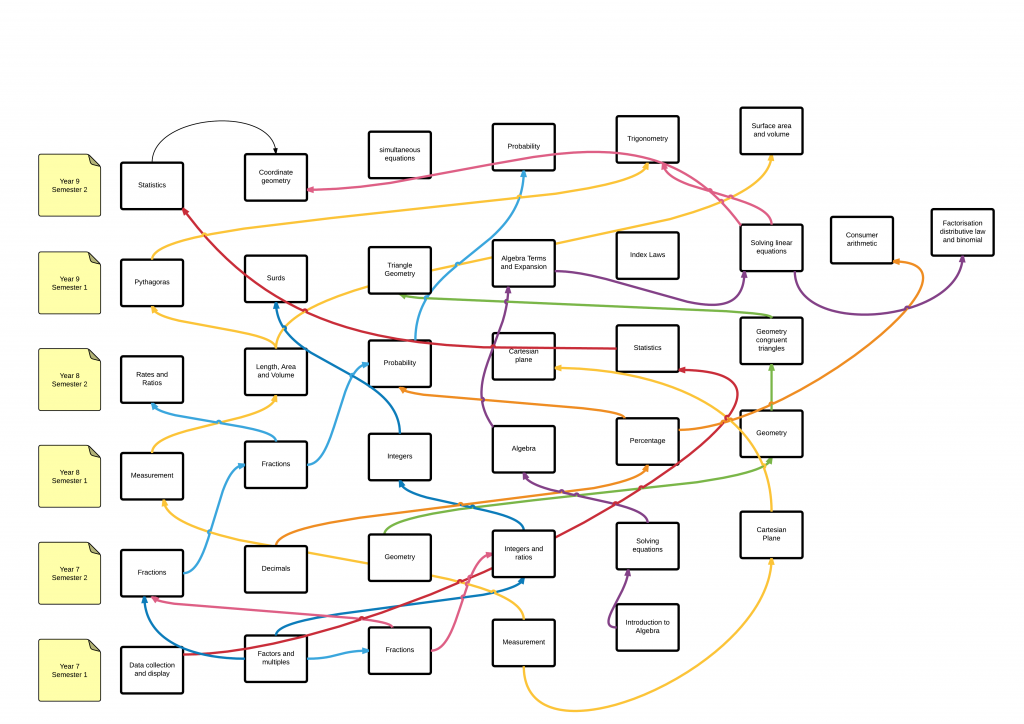Step 1. Fill the Bucket.
Step 2. Do the Exam.
Step 3. Empty The Bucket.
Step 4. Repeat.
This is how one of my students explained their approach to schooling. They fill their bucket with all the knowledge, processes and skills they need for the upcoming test. After the test they empty out the bucket and start again.
I know you’ve felt the frustration that this kind of thinking creates. You stand in front of a class and refer to something you know they learned last year (or maybe last term). Blank stares.
How can we convince students that they shouldn’t empty the bucket? We need to show them there is stuff in there worth keeping. That we’re going somewhere with all this. We need to share the RoadMap.
Give your students the RoadMap
Why should I keep my bucket filled with all this useless stuff? I’ve done the exam, it’s over.
But everything is like, connected, man. As teachers we should do our best to show them this.
How about a roadmap? Something like this? (zoom in)
Why should I retain this? Because it’s linked to that, which is linked to that, which is linked to that.
Here’s where you’ve been and here’s where we’re going. If we want students to take the journey with us, we need to share where we’re going!
Sharing your RoadMap
Don’t be afraid to share this RoadMap with your students. Education shouldn’t be a mystery destination holiday. Involve them in the journey and they’ll be excited to get there with you.
Make your map, print it large (feel free to use blockposters to print it really large) and stick it up in your classroom.
Or share it digitally. You could even make it clickable so it sends them to the resources for each destination. Or nest your maps. Maps within maps.
Don’t be afraid to show them future destinations
This week my grade 10 students have been learning to factorise quadratic equations. It’s a very mechanical process and lacks a lot of context. It’s a way-point towards a more meaningful destination.
So I showed them a snapshot of future destinations. I demonstrated projectile motion questions and optimisation questions. Huge questions beyond their current understanding. But within those larger questions they could see their current location, factorising quadratic equations.
After that students could see why we were hanging out in this quiet little town called factorising quadratics. It’s just a waypoint.We are heading to disneyland!
How do you share the RoadMap with your students?


Interesting post Joel. Do you think ALL learning and subjects can be ‘mapped’ in that way? I wonder if learning can’t be mapped whether that means it probably doesn’t have a place?
I think connecting old knowledge to new is what learning is. I can’t think of a subject that couldn’t be mapped in some way. I met an english teacher who mapped their curriculum using a spiral. Each year, the same term had the same type of writing. Come back each year and learn to do it better than last time.